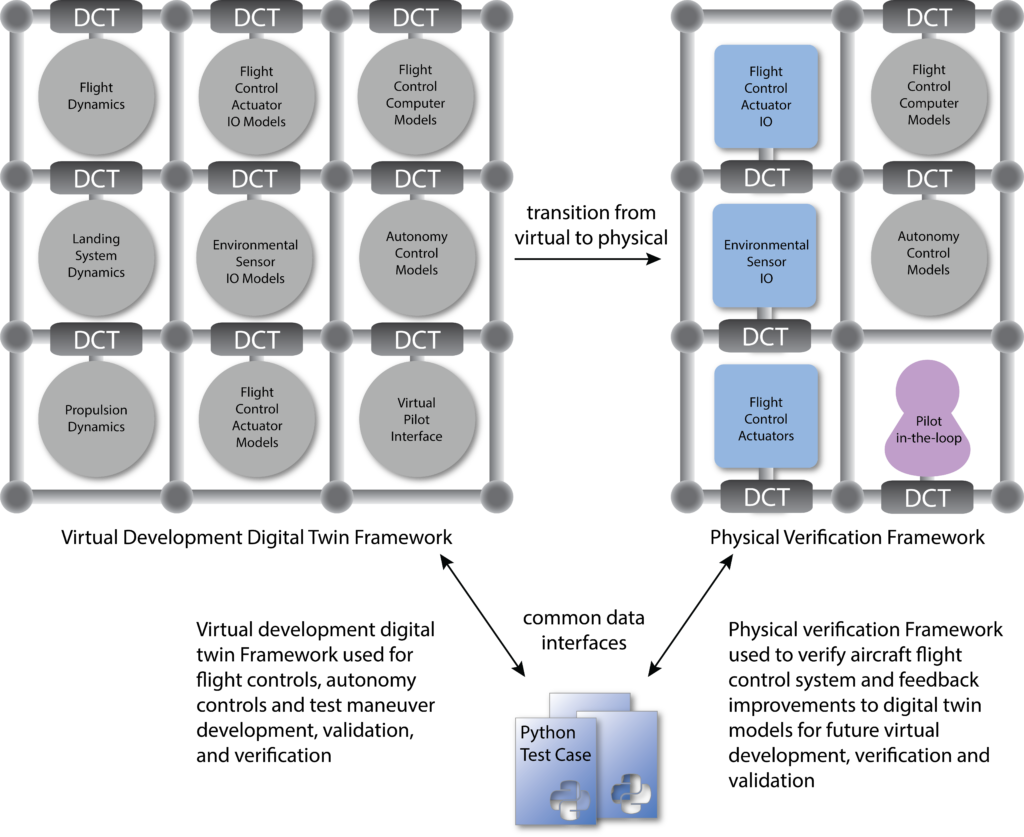From the Lab to the Skies Using an RF-Link
Introduction
One of the greatest benefits of the ADEPT Framework is the easy transition from virtual development and test to physical integration and verification. However, when your physical platform is mobile, such as a UAS, a solution is needed to extend your distributed framework from the laboratory to your mobile application. This web article presents one solution to this challenge.
Background
For this application, a novel UAS control system has been developed and tested using a digital twin in a virtual environment on a multi-core Xeon Linux rtx server. Now that a prototype device is available for flight test, it is desirable to extend the virtual environment to include the actual I/O on the actual UAS while in operation.
System Diagram

Laboratory
UAS
Discussion
Since the ADEPT Framework is based on the concept of data dictionary connections between interchangeable models, it is a natural transition from a digital twin model to a control model with I/O that extends into the real world. For this application, a complete digital twin has been developed in a virtual environment. In order to transition to the physical environment, a new Framework is assembled of the desired control models from the virtual environment, connected to the physical IO on the prototype vehicle.

When data are gathered from the physical system, they can be used to verify the performance of the virtual system. Once the basic data coming from the physical system sufficiently match that of the virtual system then more advanced maneuvers and algorithms can be tested, both in the virtual and physical systems. After some iterations, the virtual environment and digital twin can be considered sufficiently verified such that an increased portion of future development, integration, verification and validation can be conducted virtually.
Conclusion
By including an Ethernet Extender in an ADEPT Framework, a system can bridge open space to provide the benefits of a 1:1 performance comparison of a digital twin in a virtual environment through to a physical prototype in the real world. This opens up two major benefits: 1) verification of digital twin in the real world and 2) verification of the virtual environment for increased confidence and benefit from virtual testing modifications and future applications.
Next Steps
For more information about this application, or to discuss a different question about the ADEPT Framework, please contact one of our experienced application engineers today. A contact form is provided for your convenience here.
